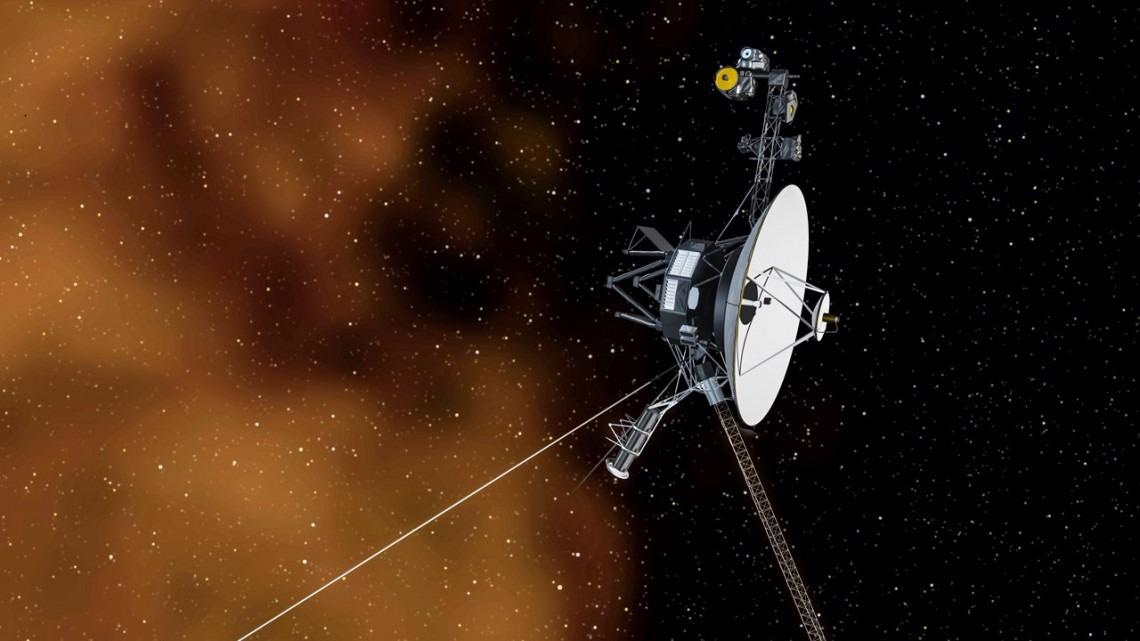May 11 2021
Voyager 1, one of the two sibling spacecraft launched by NASA about 44 years ago and currently the most distant man-made object in space, continues to work and zoom toward infinity even today.
 In an artist’s depiction, the Voyager 1 craft continues to cruise through interstellar space. Image Credit: Cornell University.
In an artist’s depiction, the Voyager 1 craft continues to cruise through interstellar space. Image Credit: Cornell University.
As the spacecraft continues to work hard, it has long since traveled beyond the border of the solar system via the heliopause—the edge with interstellar space in the solar system—into the interstellar medium.
Now, according to a study headed by Cornell University and published in the Nature Astronomy journal on May 10th, 2021, the instruments of the spacecraft have identified the continuous drone of plasma waves, or interstellar gas.
Stella Koch Ocker, a doctoral student in astronomy from Cornell University who analyzes data that is gradually sent back from over 14 billion miles away, has now revealed the emission.
“It’s very faint and monotone, because it is in a narrow frequency bandwidth. We’re detecting the faint, persistent hum of interstellar gas,” stated Ocker.
Ocker added that this new study enables investigators to figure out how the interstellar medium communicates with the solar wind and how the protective bubble of the heliosphere in the solar system is shaped and altered by the interstellar environment.
The Voyager 1 spacecraft, which was launched in September 1977, zipped past Jupiter in 1979 and subsequently Saturn in late 1980. Moving at around 38,000 miles per hour, the spacecraft crossed the heliopause in August 2012.
Once the Voyager 1 entered the interstellar space, its Plasma Wave System identified perturbations in the gas. However, in between these eruptions—triggered by the roiling Sun—scientists have revealed a persistent, steady signature generated by the weak near-vacuum of space.
The interstellar medium is like a quiet or gentle rain. In the case of a solar outburst, it’s like detecting a lightning burst in a thunderstorm and then it’s back to a gentle rain.
James Cordes, Study Senior Author and George Feldstein Professor of Astronomy, Cornell University
According to Ocker, the interstellar gas has more low-level activity than investigators had previously assumed, which enables them to follow the spatial distribution of plasma—that is, when it is not being disrupted by solar flares.
Shami Chatterjee, a research scientist from Cornell University, emphasized the importance of constant monitoring of the density of interstellar space.
We’ve never had a chance to evaluate it. Now we know we don’t need a fortuitous event related to the sun to measure interstellar plasma. Regardless of what the sun is doing, Voyager is sending back detail. The craft is saying, ‘Here’s the density I'm swimming through right now. And here it is now. And here it is now. And here it is now.’ Voyager is quite distant and will be doing this continuously.
Shami Chatterjee, Research Scientist, Cornell University
The Voyager 1 spacecraft left Earth carrying mid-1970s technology and also a Golden Record produced by a committee chaired by the late Professor Carl Sagan from Cornell University.
Scientifically, this research is quite a feat. It’s a testament to the amazing Voyager spacecraft. It’s the engineering gift to science that keeps on giving.
James Cordes, Study Senior Author and George Feldstein Professor of Astronomy, Cornell University
Apart from Ocker, Cordes, and Chatterjee, the study titled, “Persistent plasma waves in interstellar space detected by Voyager 1,” was co-authored by Donald A. Gurnett, professor emeritus and the principal investigator on the plasma wave system (PWS) on both Voyager spacecraft; Steven R. Spangler, professor; and William S. Kurth, research scientist and co-investigator on PWS, all from the University of Iowa.
The study was funded by NASA, the Jet Propulsion Laboratory, and the National Science Foundation. Cordes, Chatterjee, and Ocker are members of the Carl Sagan Institute at Cornell University.
Journal Reference:
Ocker, S. K., et al. (2021) Persistent plasma waves in interstellar space detected by Voyager 1. Nature Astronomy. doi.org/10.1038/s41550-021-01363-7.